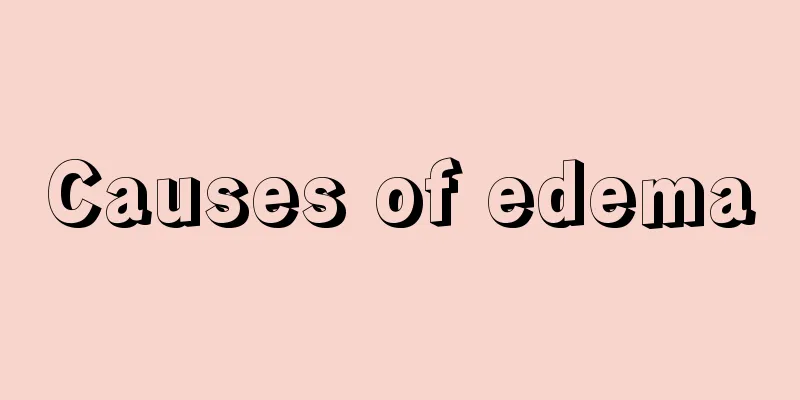Three physiological strictures of the esophagus

|
The physiological stenosis of the esophagus mainly refers to the three naturally narrow parts of the human esophagus. Once diseases occur in these three naturally narrow parts, they may affect health. In recent years, the incidence of esophagitis and esophageal cancer is relatively high, which is often related to bad eating habits, such as liking to eat hot food, overeating, etc. Let's take a look at this aspect. Three physiological strictures of the esophagus The three esophageal narrows refer to the three narrow parts of the human esophagus. The first narrowing of the esophagus is located at the beginning of the esophagus, that is, the junction of the pharynx and the esophagus, which is equivalent to the cricoid cartilage and the lower edge of the 6th cervical vertebra, surrounded by the cricopharyngeus muscle and cricoid cartilage, and about 15 cm away from the central incisor; the second narrowing of the esophagus is 7 cm below the entrance of the esophagus, located where the left bronchus crosses the esophagus, which is equivalent to the level of the sternal angle or the 4th and 5th thoracic vertebrae, formed by the aortic arch passing from its left side and the left bronchus passing from the front of the esophagus. This part is where foreign bodies are easily retained in the esophagus, about 25 cm away from the central incisor; the third narrowing of the esophagus is the hiatus where the esophagus passes through the diaphragm. The fissure is inclined upward from right to left. These three pressure marks in the esophagus can be seen during barium meal esophageal radiography. When the left atrium is pathologically enlarged, the third indentation is more obvious, about 40 cm away from the central incisor. First stricture of the esophagus The first esophageal stricture is located at the beginning of the esophagus, that is, the junction of the pharynx and the esophagus, which is equivalent to the cricoid cartilage and the lower edge of the sixth cervical vertebra, surrounded by the cricopharyngeus muscle and cricoid cartilage, about 15 cm away from the central incisor; Second stricture of the esophagus The second esophageal stenosis is 7 cm below the entrance of the esophagus, where the left bronchus crosses the esophagus, which is equivalent to the level of the sternal angle or between the 4th and 5th thoracic vertebrae. It is formed by the aortic arch passing through its left side and the left bronchus passing through the front of the esophagus. This part is where foreign bodies are easily retained in the esophagus, about 25 cm away from the central incisor. The third stricture of the esophagus The third narrowing of the esophagus is where the esophagus passes through the diaphragm. The fissure is inclined upward from right to left. Barium meal esophageal Three esophageal stenosis Three narrow esophagus (2 photos) These three pressure marks of the esophagus can be seen. When the left atrium is pathologically enlarged, the third indentation is more obvious, about 40 cm away from the central incisor. The stricture is a common site for esophageal foreign bodies to be retained and esophageal cancer to occur. The third stricture of the esophagus is the narrowest part of the esophagus. |
<<: The difference between instant and freshly ground coffee
>>: Esophageal granular hyperplasia
Recommend
What does thigh flesh twitching indicate?
Many people will feel the flesh in their thighs t...
How to eat white back Panax notoginseng
The effective active substances contained in Pana...
Is it okay not to wash your face if you have facial seborrheic dermatitis?
There are many types of dermatitis, and there are...
What are the main characteristics of mesenchymal stem cells?
Mesenchymal stem cells are a relatively important...
How to whiten teeth
Everyone wants to have a pair of healthy and whit...
What tea can get rid of bad breath
In life, many people like to drink tea. Some peop...
How does thyroid cancer cause unstable blood pressure?
Thyroid cancer is a malignant tumor originating f...
The difference between big triple positive and small triple positive
Hepatitis B is clinically divided into two types:...
What are the typical symptoms of lung cancer in the early stage? Several typical symptoms of lung cancer in the early stage
When lung cancer patients cough, they find phlegm...
Tips on how to deal with oily hair
Many female friends often have oily hair. Even if...
What is the difference between okra and yellow okra
Okra is a variety of okra. In Korea, okra is cons...
What should I do if my hands get spicy when cutting peppers? Very practical!
When cutting peppers at home, even though I was v...
What are the dangers of going to bed without drying your hair?
Many people do not have the habit of blowing thei...
Does bladder cancer run in the family?
Many cancer patients are most worried about wheth...
How to correct cervical kyphosis?
The cervical vertebrae are in an arched shape, wh...









